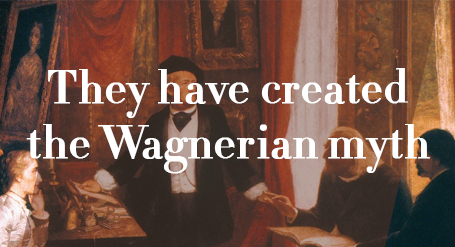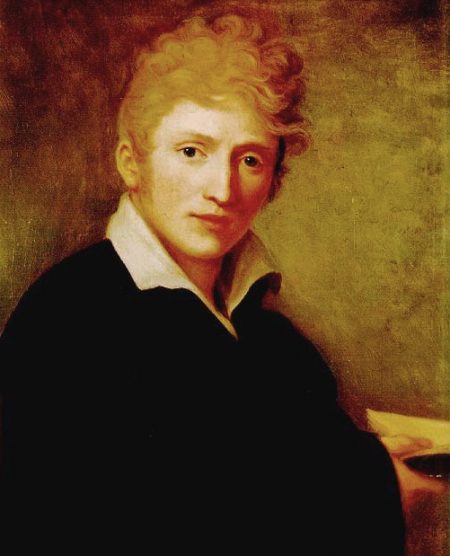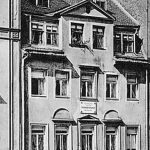
If Wagner was the cultural and musical chronicler of his time, if he remained a revolutionary activist, he had also gone into the act of police, and if he was finally his master of Bayreuth celebrated as the one of the major artist of his At the time, the illustrious composer did not live before a man made of chair and blood, animated by passions, with a sometimes violent, sometimes facetious, and sometimes tender character.

THOSE RELATED ARTICLES MAY
INTEREST YOU
 RICHARD WAGNER’S CHILDHOOD AND ADOLESCENCE (1813-1829)
RICHARD WAGNER’S CHILDHOOD AND ADOLESCENCE (1813-1829)
Wilhelm-Richard Wagner was born “at the first streaks of dawn” (Mein Leben) on May 22, 1813 in Leipzig (Kingdom of Saxony), on the second floor of the house known as the Red and White Lion, at number 3 on the Brühl, a great shopping street of the city. Richard is the ninth child of Carl Friedrich Wagner, clerk for the Leipzig Police and his wife Johanna Rosine (née Pätz). (read more…)
 Johanna Rosine PÄTZ
Johanna Rosine PÄTZ
Richard’s mother was born in Weissenfels, about thirty kilometers south-west of Leipzig, on 19. September, 1774 [1]. She was the sixth child (and the fourth child that lived) of the baker or miller Johann-Gottlob Pätz and his first wife, Dorothea Erdmuthe, née Iglisch, daughter of a tanner. (read more…)
 RICHARD WAGNER’S PARENTS
RICHARD WAGNER’S PARENTS
In May 1855, for his birthday, Richard Wagner dedicated to himself the following short poem: “In the marvellous month of May, Richard Wagner came out of the egg; Many who love him would wish / For him to have rather remained there!” This sarcastic couplet could easily be interpreted as an unconscious recollection of the first years of his life; early years characterised by several traumatic events that one can suppose – even without psychological knowledge – that the child’s unconscious could not have not been affected. (read more…)
GEYER Ludwig
(21. january 1780- 29. september 1821)
Since Friedrich Wagner died when his newborn was only six months old, he did not leave a real conscious recollection in Richard’s memory. It is not surprising then that the child loved Ludwig Geyer, his stepfather, as naturally and sincerely as if he owed everything to him, even his life. Richard called him “our father Geyer [1]“. He always spoke about him with respect and affection in his memories and conversations. He thus wrote to Mathilde Wesendonck about the painted self-portrait of Geyer: “It is a noble, gentle, melancholic, and unwell face that infinitely moves me. This portrait has become very dear to me [21]“. The description he made of it in Mein Leben was very positive: “Another testimony of his [Friedrich Wagner’s] pronounced taste for theatre was the choice of a friend who closely shared the intimacy of our home, the actor Ludwig Geyer was, above all, guided by his love of theatre for the choice of this friend, he found in him at the same time the most generous benefactor.
For Ludwig Geyer took a deep compassion for the fate of his friend’s abundant progeny when the latter passed away prematurely and henceforth he devoted himself to the care and education of this family. Homeless; hardened by life, Ludwig Geyer showed how much he aspired to a family atmosphere by marrying his friend’s widow a year later; he from then on became the most attentive father for the seven children whom the other had left behind. This distinguished man […] handled my education with the greatest care and affection. He wished to adopt me as his own son, and that is why he gave me his name when I was admitted to my first school, so that, for my fellow students in Dresden I remained Richard Geyer until my fourteenth year [22]”
Ludwig Heinrich Christian Geyer was born on 21 January, 1780 in the town of Luther, Eisleben, where his father served as an actuary at the revenue office. He began his law studies in Leipzig, that his father’s death forced him to interrupt. He also attended for some time the Academy of Fine Arts of Dresden. For several years, he travelled through the small provincial towns and the water towns as a portraitist. Although his training was precarious, he was not devoid of talent. Back in Leipzig, it was probably in 1800 that Geyer met Carl Friedrich Wagner, who was almost ten years his senior. The latter recommended to his friends “a young portraitist, who, by a twist of fate, was suddenly forced to abandon his law studies [23]”. A deep friendship arose between the two men and Geyer became a close friend of the family.
Together they made amateur theatre. Friedrich Wagner undoubtedly quickly noticed that his young friend’s acting talent far surpassed his own. After commitments in various small towns in Germany, he joined the troupe of the Magdeburg theatre in 1805. At the end of this year, he left town for Stettin, where he lived until the dissolution of the troupe in the autumn of 1806. He then lived in Breslau until August 1809 before returning to Leipzig. Geyer was engaged in October 1809 in Joseph Seconda’s troupe, who played in this town during the summer and during fairs, and in Dresden in the winter. In 1814 he was promoted to the rank of Court actor; the Seconda troupe having been integrated into the Court Theatre in Dresden. This artist of honest and bourgeois reputation, with a cheerful character, excelled in character roles. The reviews were very laudatory. Endowed with multiple talents, Johanna’s second husband was also a playwright. He wrote several plays. Wagner would remember The Infanticide of Bethlehem, which was “praised by Goethe in the most pleasant manner [24]”.
But his roles and plays did not allow Geyer to live properly. His solid reputation as a portraitist made up for it. In Dresden, he was commissioned to make the portrait of the Queen of Saxony, and, in 1819, on a tour of Munich, he portrayed several members of the Bavarian aristocracy. It was him that made in 1813 the oil painting of Johanna-Rosine; in 1806, he also produced two self-portraits. Geyer would have liked his adopted son to turn to painting, but the young boy showed no disposition in this field and could not draw! On the flip side, he introduced him to the theatrical world: “The most distant memories of my youth are thus connected to this adoptive father and, through him, slide towards theatre. (…) The discovery of theatre was a revelation for me; not only did I have access to the secret lodge from which one could go on the stage, not only did I visit the dressing room with its fantastic costumes and accessories, but I also participated personally in the game [25]”. This predestination was further reinforced by his stepfather when, on the eve of his death, hearing Richard tap on the piano, he asked, “Would he have a flair for music?[26]” Death continued its harvest: on 29 September, 1821, tuberculosis took away the man who had guided Richard through his early childhood. Wagner wrote: “I was taken to my father’s bedside; the extreme weakness with which he spoke to me, the means used to try to alleviate the suffering caused by his acute pleurisy, all this made me feel like I was living a nightmare, and I believe that I was struck by it to the point of being unable to weep[27]”.
Excerpt from ![]() Pascal Boutedja “Richard Wagner’s parents”
Pascal Boutedja “Richard Wagner’s parents”
[1] Richard Wagner, My life, p. 13-14.
[2] 29th septembre 1858 letter, in : Richard Wagner to Mathilde Wesendonk. Paris, Parution, 1986, p.90.
[3] Richard Wagner, My life, p. 14.
[4] Ernest Newman, The Life of Richard Wagner. 1.1813-1848, p. 16.
[5] Richard Wagner, My life, p. 14.
[6] Ibid, p.14-15.
[7] Ibid, p.15.
[8] Ibid, p.15.
If you wish to share further information about this article, please feel free to contact us !